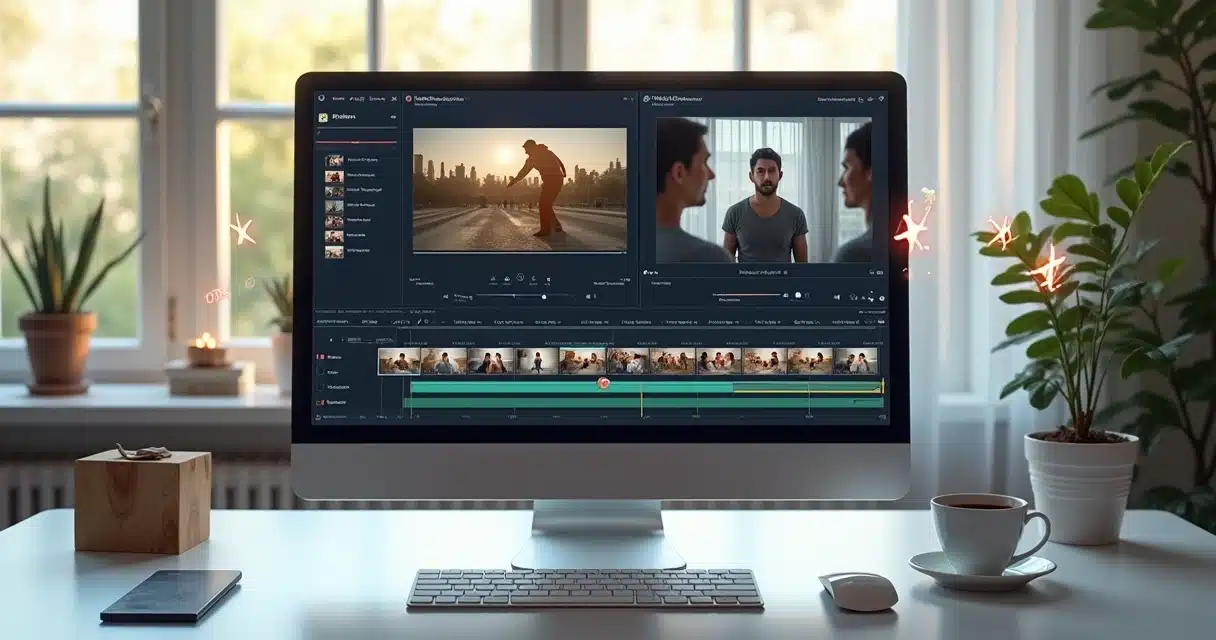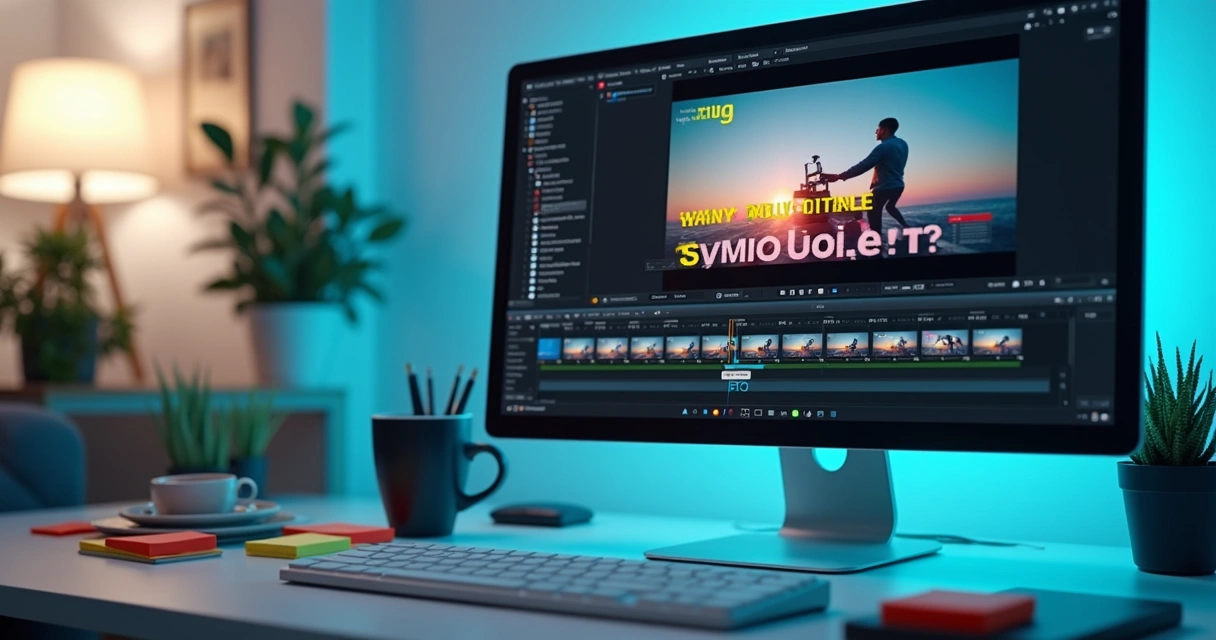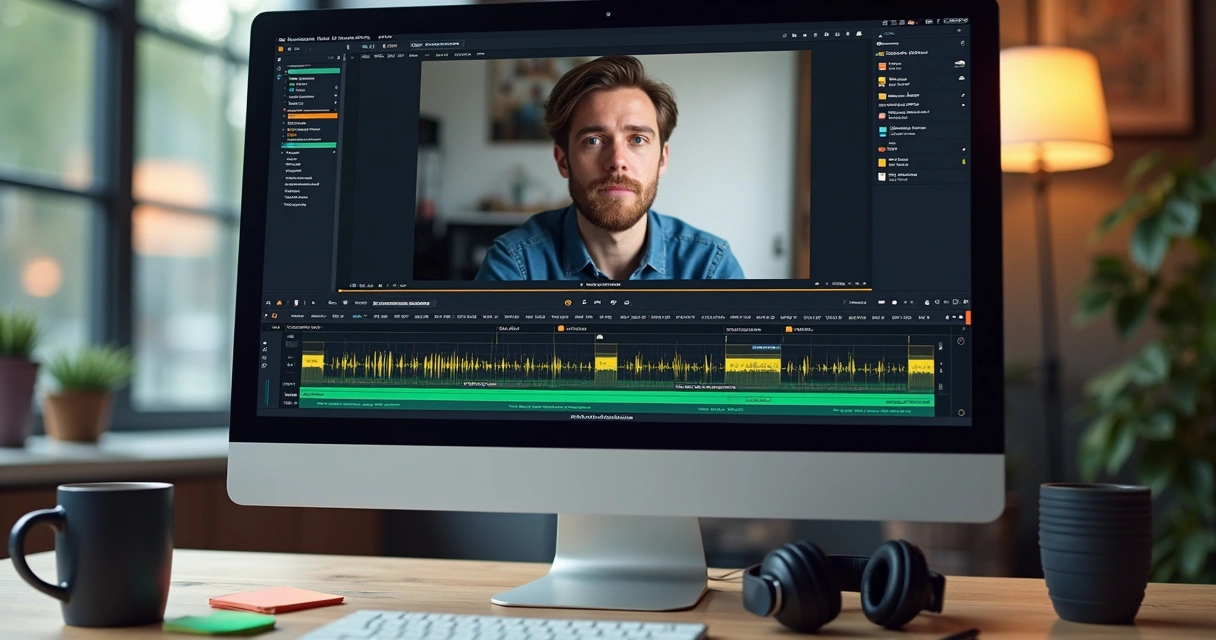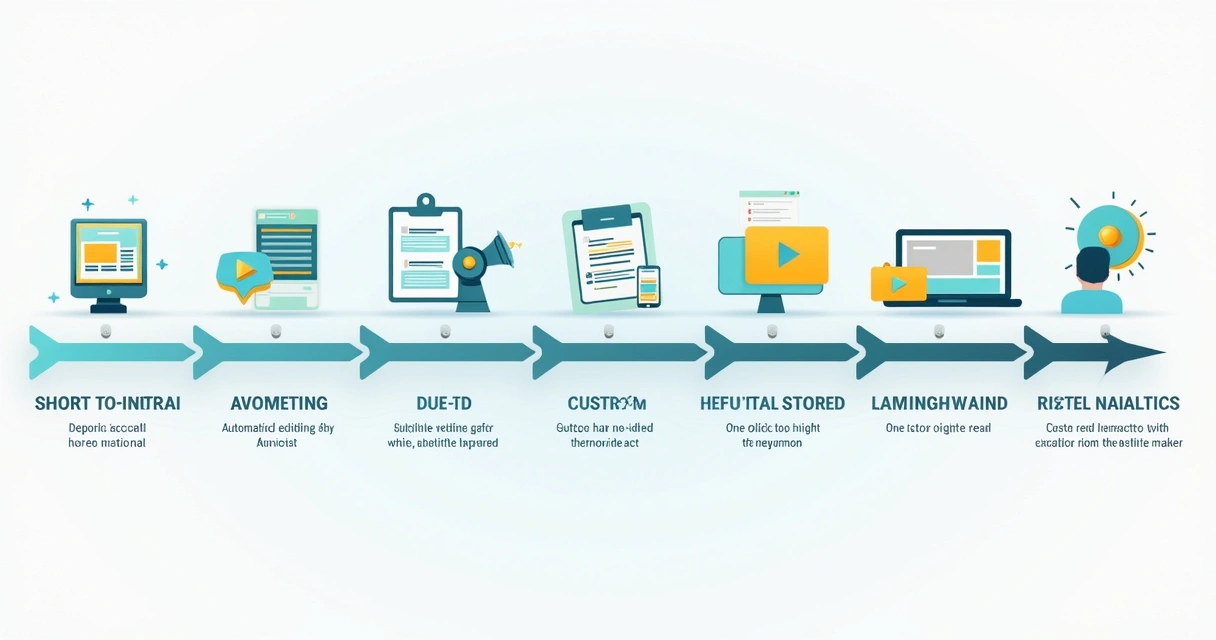If a few years ago creating short and engaging videos was something restricted to professional studios or established influencers, today anyone can turn long videos into perfect clips for social media in just a few minutes. This is not an exaggeration: AI-powered technologies handle almost everything, from selecting the best highlights to adjusting background music, captions, hashtags, and platform-specific formats.
Anyone who has searched for alternatives to Opus Pro/Opus Clip knows that the possibilities go beyond basic trimming features; these platforms expand customization, automate details, and allow creators to reach wider audiences, even when time is limited or budgets are tight.
In this article, you’ll learn how these solutions work, discover modern features such as facial tracking, templates, auto captions, social media integration, and multilingual options. We’ll show you what makes these tools different, how to choose the best one to maximize your video reach, and why now — perhaps more than ever — rethinking the old manual editing process could be the turning point for your content.
Artificial intelligence is redefining creativity: delivering volume, quality, and speed at the same time.
Why look for alternatives to transform long videos into shorts?
The boom of short-form video created a new demand: cutting long videos into multiple synthetic pieces of content, optimized to go viral across the main platforms. This shift required speed, and traditional tools can no longer keep up with the pace of production, quality control, and the variety of formats demanded by the digital environment.
For content creators, brands, and businesses, exploring new AI-powered solutions goes far beyond a simple software replacement. In practice, it’s about seeking efficiency, creativity, and broader reach in a competitive and ever-changing landscape.
The most common benefits
- Time savings in editing stages;
- Automatic detection of the most engaging moments;
- Synchronized (and multilingual) captions;
- Customization of templates, colors, fonts, and layouts;
- Export in multiple formats with direct social media integrations;
- Engagement and performance analytics for video clips.
Additionally, studies on the use of synthetic AI-generated videos indicate that this technology can be a viable alternative to traditional production methods — in both educational environments and independent creators’ workflows — without harming learning experiences, content consumption, or audience retention. (Recent Study on Generative AI for Videos)
Features that truly make a difference
When thinking about a solution for cutting and transforming videos quickly, it’s natural to consider only the “trim” or “cut” function. But modern tools add a whole suite of resources that go far beyond. They automate post-production steps, provide data to improve content performance, and allow customizations that previously required entire design and editing teams. This makes all the difference for those who can’t — or don’t want to — waste time.
Facial recognition and face tracking
This function identifies participants in a recording, keeps the focus on the main face during cuts, and ensures the framing always looks right. The impact? A more aesthetic video that grabs more attention, especially on mobile platforms.
The face is what connects creator and audience — it deserves focus in every clip.
Automatic caption generation and synchronization
Automatic captions not only improve comprehension and accessibility, but also serve as a visual hook to hold attention in the first few seconds. Smart tools create dynamic, colorful captions, highlight keywords, and allow customizable layouts. This is especially useful for social media, since many users watch without sound or scroll quickly through feeds.
Total customization with templates
Ready-made, editable, and adaptable templates speed up production and keep content visually consistent — that recognizable “channel look” on TikTok, Instagram, or YouTube Shorts. They include watermarks, branded borders, exclusive fonts, and even animated intros/outros.
Automatic hashtags and title generation
Another standout is insight automation: systems suggest the best titles and hashtags based on trending topics and keywords in the conversation. This significantly increases the chances of virality.
 Social media integration
Social media integration
Distributing clips across multiple platforms (Instagram, TikTok, YouTube Shorts, Facebook, Kwai, LinkedIn) must be simple. Integration with APIs speeds up export and publishing, reducing repetitive tasks and maximizing content exposure.
Multilingual support and captions
Where language barriers once limited reach, AI video tools now break that obstacle. Some platforms offer transcription and subtitles in multiple languages, allowing the same clip to go viral in different countries. Projects using AI to create and distribute videos in low-resource languages have shown the power of this technology to democratize content — enabling creators in 22 countries to expand their global audiences. (Research on AI Videos in Low-Resource Languages)
Engagement analysis
AI-powered video clipping platforms also help understand what works in your content. They measure metrics such as retention rate, engagement peaks, conversions, and comments, allowing you to fine-tune your strategy in real time.
VDClip: a smart, complete, and Brazilian alternative
Among the most modern and efficient options on the market is VDClip, a platform developed in Brazil designed for those who value agility, customization, and workflow integration with short videos.
VDClip highlights:
- Automatic curation of best moments: identifies key segments based on keywords, emotions, and audio peaks;
- Advanced face tracking: keeps the protagonist centered in cuts, ideal for podcasts, interviews, and vlogs;
- Dynamic captioning with customizable templates: choose fonts, colors, highlighted keywords, and screen placement;
- Strategic hashtag and title suggestions: based on trends and video content;
- Direct integration with major social platforms for fast publishing;
- Easy export in different formats and resolutions: meet each network’s requirements effortlessly;
- Multilingual support: subtitles and templates ready for various languages, expanding global reach;
- Performance analytics: track views, engagement, and shares.
 Because it’s 100% Brazilian, VDClip understands the nuances of Portuguese exceptionally well — including our humor and communication style — while also handling other languages effectively. The result is clips and captions that feel less robotic and more authentic — a crucial difference on TikTok and Reels.
Because it’s 100% Brazilian, VDClip understands the nuances of Portuguese exceptionally well — including our humor and communication style — while also handling other languages effectively. The result is clips and captions that feel less robotic and more authentic — a crucial difference on TikTok and Reels.
Practical example: creating a viral clip in minutes
Imagine you have a 50-minute recorded interview. With just a few clicks, VDClip detects the most emotional moments (laughter, host reactions), trims them, centers the participants’ faces, adds colorful captions, and suggests hashtags to boost discoverability.
The result? A short, straight-to-the-point video, ready to publish across platforms — with strong viral potential.
 Comparing the main features
Comparing the main features
Before deciding on an AI video clipping alternative, it’s worth knowing which characteristics really make a difference:
- Face tracking: the more accurate, the better the visual experience;
- Automatic multilingual captions: expand audience reach (check support for less common languages);
- Export templates: essential if you post across multiple platforms;
- Editable templates: save time, ensure consistent branding, and keep videos professional-looking without a designer;
- Engagement analysis: useful to measure what topics and formats perform best;
- SEO title and hashtag suggestions: automate optimization and maximize reach;
- Compatibility with vertical, horizontal, and square formats: crucial for multi-platform creators.
How to choose the best tool for your strategy
Each video creator, brand, or business has different goals. Some key questions help define priorities:
- Do you want to save time in editing?
- Do you aim for virality or just less rigid content?
- Do you need ready-made templates but still want customization?
- Will your content be published on multiple platforms or just one?
- Do you target international audiences?
For example:
- Multi-platform creators often need full automation, including unified dashboards for scheduling and publishing.
- Brands focused on strong visual identity will value template customization, logos, and brand adaptation.
- Pages aiming for international reach need multilingual support.

In all cases, it’s recommended to choose platforms with an intuitive interface, local support, and free trial options — something VDClip offers to all new users.
Features that boost viral potential
Social media algorithms change constantly. To ensure your clips reach the masses, the best platforms invest in “invisible” features that make a big difference behind the scenes:
- Suggested cuts and key moments: AI detects facial expressions, voice tone shifts, and pauses to capture engagement peaks;
- A/B testing for titles and thumbnails: helps identify which element drives higher engagement;
- Hot topic detection through semantic analysis: identifies trending themes and adjusts hashtags/tags;
- Easy export: one-click publishing without manual format conversion;
- Constant updates: AI evolves fast — choose platforms that stay up to date.
The impact on small creators and businesses
Even those with zero editing experience can produce professional clips in minutes. This reduces dependence on expensive freelancers or long agency backlogs. Small businesses gain autonomy, while solo influencers gain the agility needed to maintain consistent posting frequency — crucial in today’s social media landscape.
Time saved turns into more ideas executed — and more chances to go viral.
Simplified workflow: from upload to viral
The best AI-powered alternatives replace manual editing with streamlined workflows:
- Upload the long video
- Automatic highlight detection (using facial recognition, audio, and text analysis)
- Auto-generated cuts, captions, layouts, and hashtag/title suggestions
- Quick customization with templates
- Export and publish directly to chosen platforms
- Real-time performance analysis (views, comments, engagement peaks)
- Reuse best-performing clips for new posts
 Engagement and reach on social media
Engagement and reach on social media
Recent reports confirm: short-form videos dominate screen time, improve retention rates, and boost organic reach across almost every platform. The combination of AI, visual personalization, and multi-platform distribution increases the odds of gaining traction quickly — even in communities once limited by language barriers.
Studies on AI use in education also suggest positive impacts on engagement and adaptability, both for students and for content creators in general.
Example: how a short clip can boost campaigns
Imagine a small business launching a flash promotion. In just minutes, you can create a short video highlighting the offer, using custom templates and captions to emphasize the call-to-action. Publishing instantly across multiple platforms maximizes viral potential and immediate conversions — something nearly impossible with traditional manual editing.
Moreover, the ongoing use of AI tools creates a continuous learning cycle: each published clip feeds platform recommendation algorithms, progressively boosting reach for future videos.
Updates and trends: what to expect in the future
Every month, new AI video features emerge. Some upcoming trends include:
- Emotional analysis: AI detecting emotions in speech and suggesting cuts based on them;
- Automatic adaptation of resolution and framing for each platform;
- AI-generated scripts and storyboards: more support for beginners;
- Interactive features with audiences (polls, stickers, integrated reactions);
- True multi-platform workflows: edit, publish, and analyze results from a single dashboard.
Given the speed of these innovations, choosing a local tool — built by those who understand regional content dynamics and constantly update features — makes more sense than ever. Platforms like VDClip are already incorporating many of these trends, keeping users a step ahead.
Final thoughts: choosing the ideal alternative
As we’ve seen, a new landscape has emerged for creators and brands looking to transform long videos into short, engaging, viral-ready clips. AI platforms simplify, accelerate, and expand creative possibilities while reducing costs and barriers.
Features such as face tracking, auto captions, customizable templates, engagement analytics, and integrated publishing deliver freedom, speed, and scalability.
VDClip stands as a strong local example, fully adapted to the Brazilian market and designed to help your strategy reach more people, build stronger digital presence, and achieve better results.
More time creating, less time editing.
If you want to take your editing to the next level, gain agility, and explore AI tools made for creators, try VDClip. Take advantage of free monthly credits to test, create videos consistently, transform your workflow, and see your content reach new audiences quickly and effectively.
Frequently Asked Questions about Opus Pro/Opus Clip Alternatives
What is an Opus Pro alternative?
An alternative to Opus Pro is any platform or software that offers similar features for transforming long videos into short, social-ready clips using artificial intelligence. These options usually bring automated trimming, dynamic captions, customizable templates, and integration with multiple platforms, making production easier for creators, brands, and influencers.
What are the best AI video tools?
Several options stand out for their advanced features, such as automatic highlight curation, facial tracking, easy export, multilingual support, editable templates, AI-based hashtag/title suggestions, and engagement analysis. Among national solutions, VDClip stands out for being complete, easy to use, and adapted to Brazilian users.
How do I choose an option beyond Opus Pro?
Evaluate what’s most important for your strategy: speed of production, task automation, customization, publishing and distribution across social networks, multilingual support, or performance analysis. Testing free versions and experiencing the workflow helps identify which platform best suits your goals.
Are Opus Pro alternatives free?
Some tools offer free plans with limited features (like watermarks, limited clips, or restricted templates), while others provide trials so users can test everything before upgrading. For example, VDClip allows creators to generate free clips every month.
Is it worth using alternatives to Opus Pro?
Yes — mainly because of time savings, improved quality, customization, and the ease of publishing the same content across multiple social networks. These alternatives boost reach, increase engagement, and make the production process more agile, even for those with no technical experience. Testing different solutions shows just how powerful AI can be in a digital strategy.

 Social media integration
Social media integration Comparing the main features
Comparing the main features Engagement and reach on social media
Engagement and reach on social media